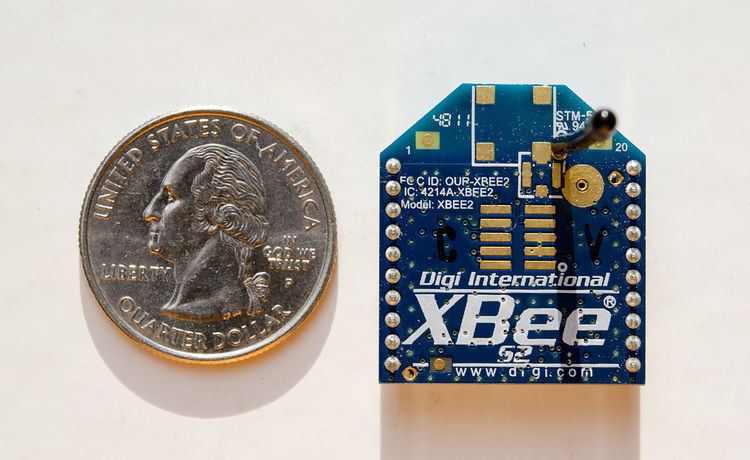Type Public (NASDAQ: DGII) Website www.digi.com/xbee/ Number of employees 600 (world-wide) | Industry Computer hardware Founded 1985 | |
 | ||
Stock price DGII (NASDAQ) US$ 11.70 0.00 (0.00%)6 Apr, 4:00 PM GMT-4 - Disclaimer Headquarters Minnetonka, Minnesota, United States Profiles | ||
Digi xbee thread demonstration
Digi XBee is the brand name of a family of form factor compatible radio modules from Digi International. The first XBee radios were introduced under the MaxStream brand in 2005 and were based on the IEEE 802.15.4-2003 standard designed for point-to-point and star communications at over-the-air baud rates of 250 kbit/s.
Contents
- Digi xbee thread demonstration
- Meet the digi xbee cellular 4g lte cat 1 embedded modem
- Form factors antennas and data modes
- Product line
- References
Two models were initially introduced — a lower cost 1 mW XBee and the higher power 100 mW XBee-PRO. Since the initial introduction, a number of new XBee radios have been introduced and an ecosystem of wireless modules, gateways, adapters and software has evolved.
The XBee radios can all be used with the minimum number of connections — power (3.3 V), ground, data in and data out (UART), with other recommended lines being Reset and Sleep. Additionally, most XBee families have some other flow control, input/output (I/O), analog-to-digital converter (A/D) and indicator lines built in. A version called the programmable XBee has an additional on-board processor for user’s code. The programmable XBee and a surface-mount version of the XBee radios were both introduced in 2010.
Meet the digi xbee cellular 4g lte cat 1 embedded modem
Form-factors, antennas, and data modes
XBee modules are available in two form-factors — through-hole and surface mount (SMT). All XBees, with the exception of the XBee 868LP, are available in the popular 20-pin through-hole form-factor. Certain XBee modules are also available in a 37-pad surface-mount design, which is popular for higher volume applications due to the reduced manufacturing costs of SMT.
XBee modules typically come with several antenna options, including U.FL, PCB embedded, wire, and RPSMA.
The XBees can operate either in a transparent data mode or in a packet-based application programming interface (API) mode. In the transparent mode, data coming into the Data IN (DIN) pin is directly transmitted over-the-air to the intended receiving radios without any modification. Incoming packets can either be directly addressed to one target (point-to-point) or broadcast to multiple targets (star). This mode is primarily used in instances where an existing protocol cannot tolerate changes to the data format. AT commands are used to control the radio’s settings. In API mode the data are wrapped in a packet structure that allows for addressing, parameter setting and packet delivery feedback, including remote sensing and control of digital I/O and analog input pins.
Product line
As of March 2016, the XBee radio family consists of
